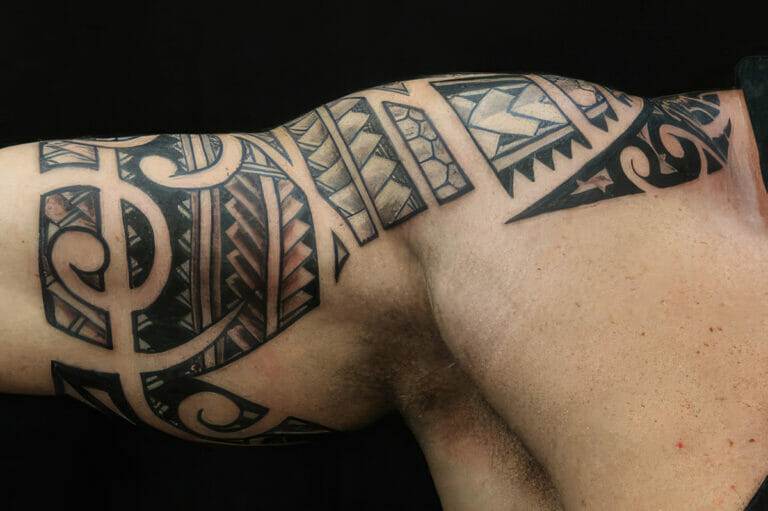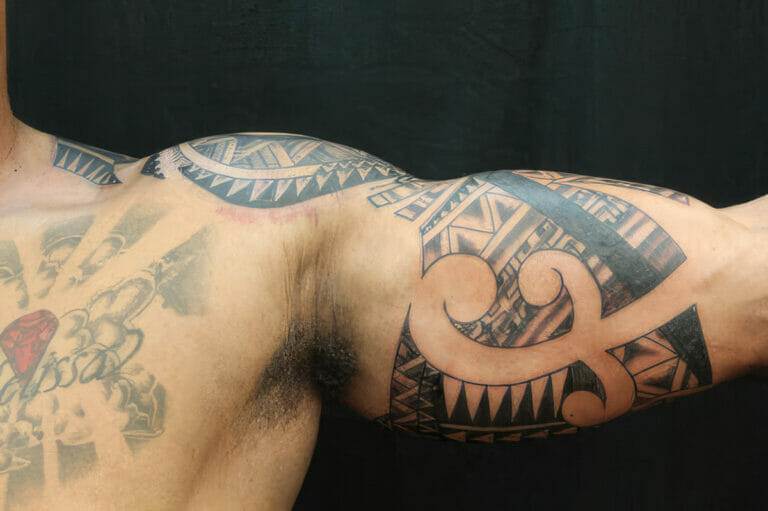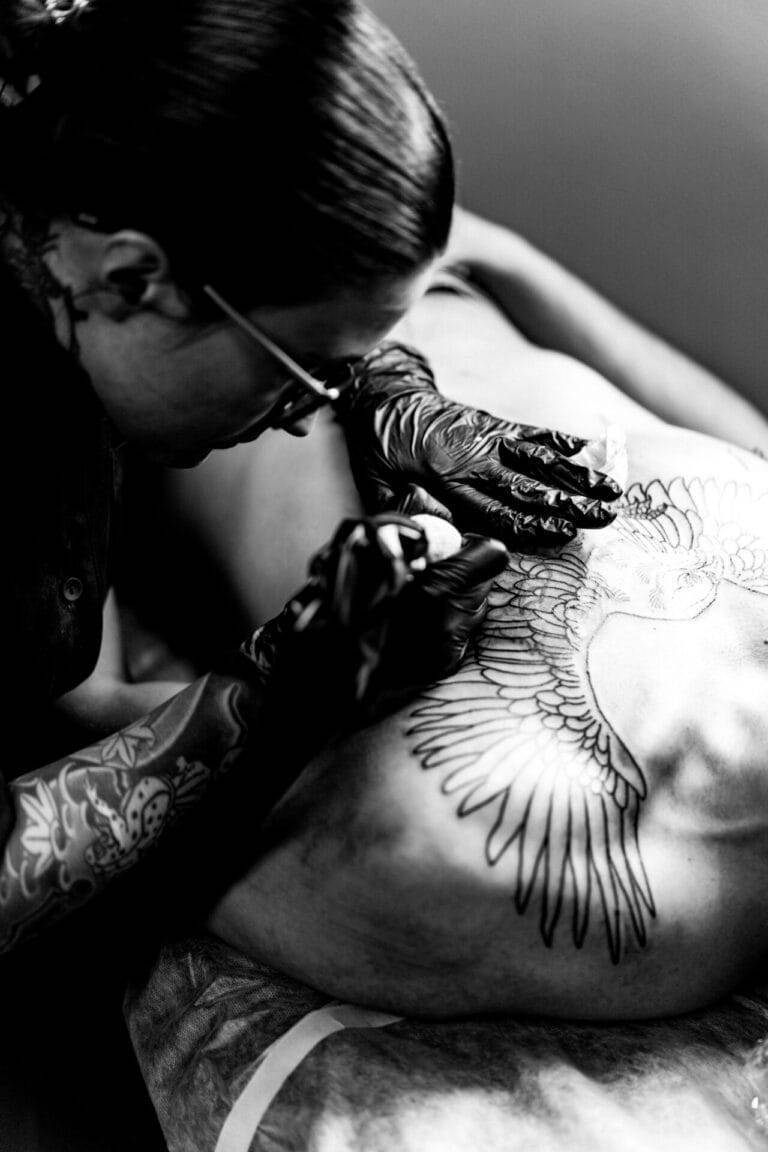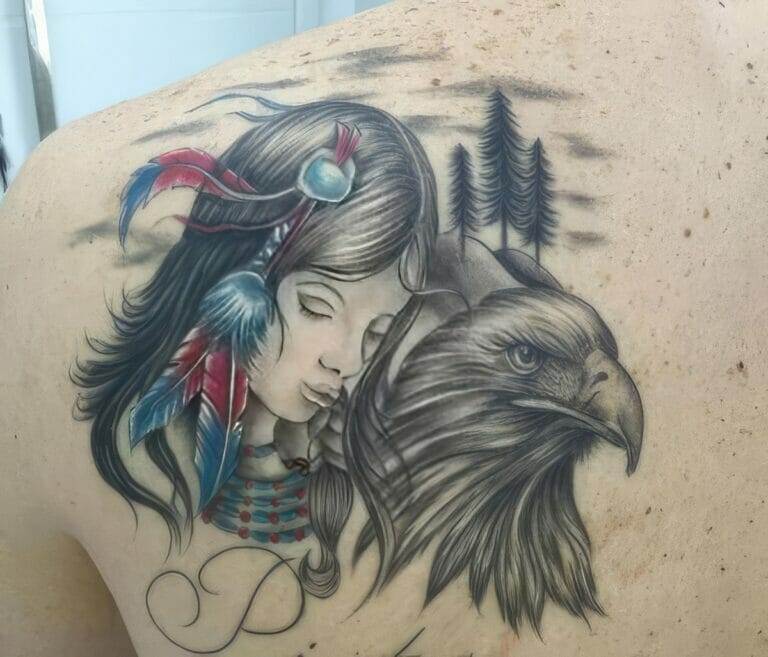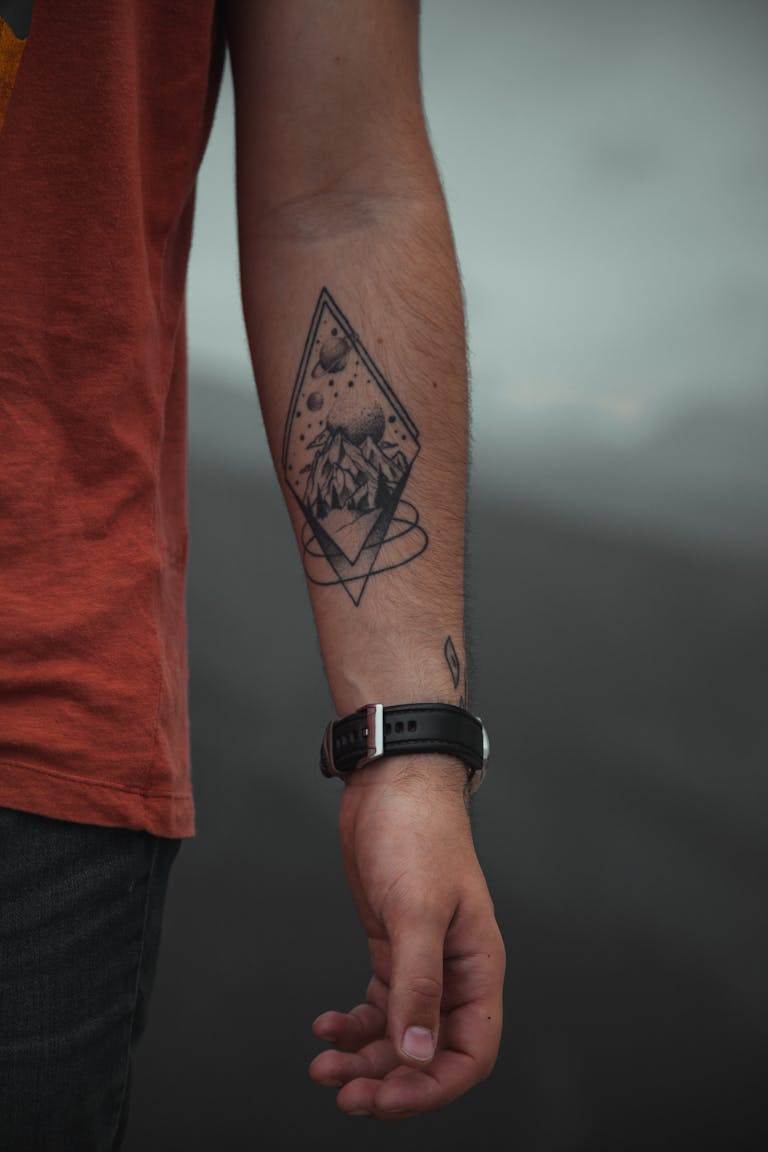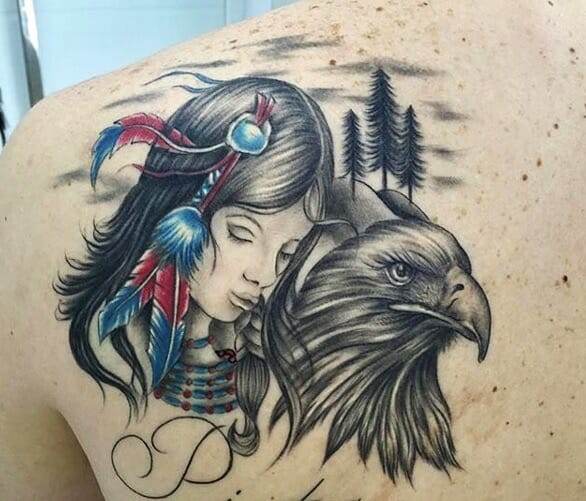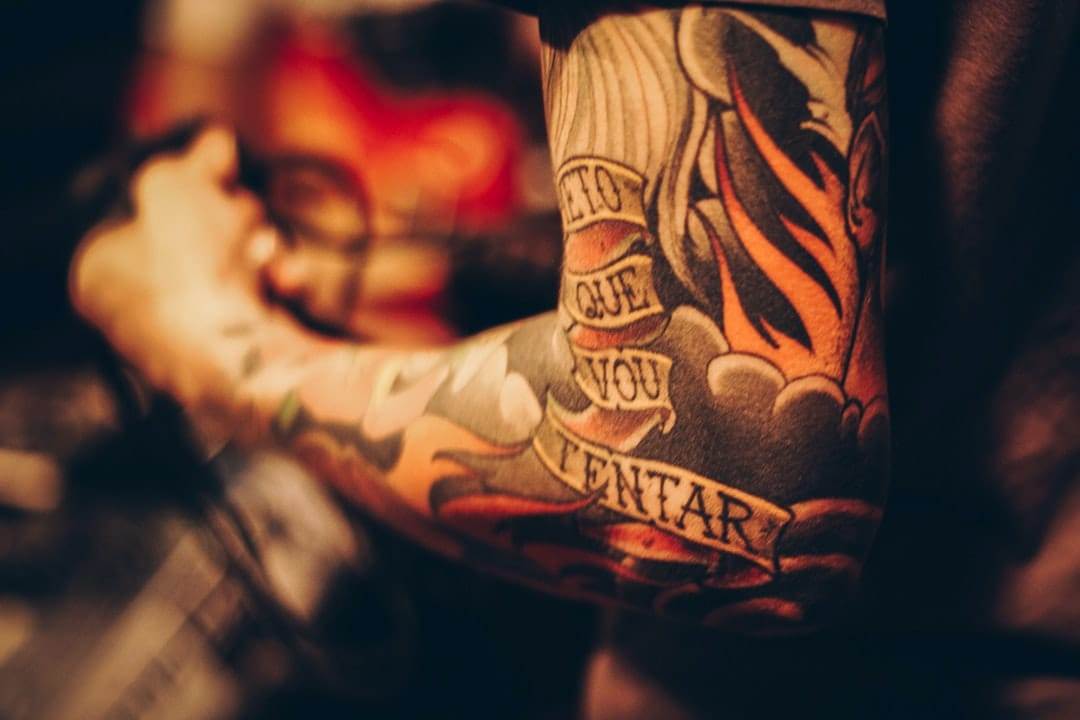
Watercolor tattoos are a unique and vibrant form of body art that has gained popularity in recent years. Unlike traditional tattoos, which typically use bold lines and solid colors, watercolor tattoos mimic the fluid and translucent nature of watercolor paintings. This style of tattooing creates a beautiful and ethereal effect on the skin, with colors blending seamlessly together to create a stunning piece of art.
What sets watercolor tattoos apart from traditional tattoos is their soft and dreamy appearance. The colors used in watercolor tattoos are often pastel or muted shades, giving them a more delicate and whimsical feel. The technique used to create these tattoos involves layering and blending different colors together, resulting in a unique and personalized design.
In recent years, watercolor tattoos have become increasingly popular among tattoo enthusiasts. People are drawn to the beauty and artistic quality of these tattoos, as well as the ability to create a one-of-a-kind piece of art on their bodies. Watercolor tattoos offer a fresh and modern take on traditional tattooing, allowing individuals to express their creativity and individuality in a unique way.
The History of Watercolor Tattoos: From Traditional to Contemporary
The origins of watercolor tattoos can be traced back to traditional tattooing techniques. In the past, tattoo artists would use watered-down ink to create softer and more subtle designs. This technique was often used for shading or creating gradients in traditional tattoos.
However, it wasn’t until more recently that watercolor tattoos became a distinct style of their own. Artists began experimenting with different techniques and materials to achieve the fluid and translucent look of watercolor paintings. They started using diluted ink or even watercolor paints to create these unique designs.
Famous artists such as Amanda Wachob and Ondrash played a significant role in popularizing watercolor tattoos. Their innovative approach to tattooing and their ability to create stunning and realistic watercolor designs helped bring this style into the mainstream. Today, there are countless talented artists around the world specializing in watercolor tattoos, each with their own unique style and approach.
The Process of Creating Watercolor Tattoos: Techniques and Tools
Creating a watercolor tattoo requires a different set of techniques and tools compared to traditional tattooing. The goal is to mimic the fluid and translucent nature of watercolor paintings, which requires a delicate touch and a keen eye for color blending.
One of the most common techniques used in watercolor tattoos is called “wet-on-wet.” This involves applying multiple layers of diluted ink or watercolor paint onto the skin, allowing the colors to blend together naturally. This technique creates a soft and dreamy effect, with colors seamlessly transitioning from one to another.
To create watercolor tattoos, artists use a combination of traditional tattooing equipment and specialized tools. They may use traditional tattoo machines or hand-poke techniques to apply the ink onto the skin. Additionally, artists often use different types of brushes, sponges, or even their fingers to blend and manipulate the colors on the skin.
Finding a skilled artist is crucial when it comes to watercolor tattoos. Due to the delicate nature of this style, it requires a high level of skill and expertise to achieve the desired effect. It’s important to do thorough research and look at an artist’s portfolio before getting a watercolor tattoo to ensure they have experience in this specific style.
Choosing the Right Design: Ideas and Inspiration for Watercolor Tattoos
When it comes to choosing a design for a watercolor tattoo, the possibilities are endless. Watercolor tattoos can be created in any style or subject matter, from flowers and animals to abstract designs or even portraits. The key is to find a design that resonates with you and reflects your personal style and interests.
Some popular designs for watercolor tattoos include floral arrangements, landscapes, and animals. These subjects lend themselves well to the soft and dreamy nature of watercolor tattoos. However, it’s important to remember that any design can be transformed into a watercolor tattoo with the right artist and technique.
When looking for inspiration for a watercolor tattoo, there are many sources to consider. Artwork, photographs, and even nature itself can provide ideas for unique and personalized designs. It’s also helpful to look at other watercolor tattoos for inspiration and to get a sense of what styles and techniques you prefer.
Customizing a design is another important aspect of getting a watercolor tattoo. Working closely with your chosen artist, you can add personal touches or make modifications to ensure the design reflects your individuality. This collaborative process allows you to create a truly unique and meaningful piece of art.
Placement of Watercolor Tattoos: Where to Add a Splash of Vibrancy
The placement of a watercolor tattoo can greatly impact its overall look and effect. Certain body parts lend themselves well to the soft and dreamy nature of watercolor tattoos, while others may not be as suitable.
Some popular body parts for watercolor tattoos include the forearm, upper arm, shoulder, back, and thigh. These areas provide a larger canvas for the artist to work with and allow for more intricate and detailed designs. Additionally, these body parts tend to have less movement and stretching, which can help preserve the integrity of the tattoo over time.
When choosing the placement of a watercolor tattoo, it’s important to consider factors such as visibility, comfort, and how the design will flow with the natural contours of your body. It’s also important to keep in mind that certain body parts may be more sensitive or prone to fading, so it’s essential to discuss these considerations with your chosen artist.
The placement of a watercolor tattoo can also affect its overall aesthetic. For example, a watercolor tattoo on the forearm may be more visible and eye-catching, while a tattoo on the back may have a more intimate and personal feel. Considering these factors can help you choose the perfect placement for your watercolor tattoo.
Caring for Watercolor Tattoos: Tips for Keeping Your Ink Vibrant

Proper aftercare is essential for maintaining the vibrancy and longevity of a watercolor tattoo. While the healing process for watercolor tattoos is similar to that of traditional tattoos, there are some additional considerations to keep in mind.
After getting a watercolor tattoo, it’s important to follow your artist’s aftercare instructions carefully. This typically involves keeping the tattoo clean and moisturized, avoiding direct sunlight and excessive sweating, and refraining from picking or scratching at the tattoo.
It’s also important to avoid activities that can damage the tattoo during the healing process. This includes avoiding swimming pools, hot tubs, or any other bodies of water that may contain bacteria. It’s also important to avoid wearing tight or restrictive clothing that may rub against the tattoo.
Touch-up and maintenance are also important aspects of caring for a watercolor tattoo. Over time, the colors may fade or blend together, so it’s important to schedule touch-up sessions with your artist as needed. Additionally, protecting the tattoo from excessive sun exposure can help prevent fading and preserve its vibrancy.
Watercolor Tattoos vs. Traditional Tattoos: The Differences and Similarities
Watercolor tattoos and traditional tattoos have distinct differences in terms of style and technique. Traditional tattoos typically use bold lines and solid colors, while watercolor tattoos mimic the fluid and translucent nature of watercolor paintings.
One of the main advantages of watercolor tattoos is their unique and ethereal appearance. The soft and dreamy effect created by blending different colors together gives these tattoos a more delicate and artistic quality. Watercolor tattoos also offer more flexibility in terms of design and subject matter, as they can be created in any style or subject.
On the other hand, traditional tattoos have a more timeless and classic look. The bold lines and solid colors used in traditional tattoos create a strong and impactful design. Traditional tattoos also tend to be more durable and long-lasting, as the solid colors are less prone to fading or blending together over time.
When choosing between watercolor tattoos and traditional tattoos, it ultimately comes down to personal preference. Some individuals may prefer the soft and dreamy look of watercolor tattoos, while others may prefer the bold and timeless look of traditional tattoos. It’s important to consider your own style, interests, and aesthetic preferences when making this decision.
Watercolor Tattoos and Skin Tone: How to Choose the Right Colors
When it comes to watercolor tattoos, considering your skin tone is crucial in choosing the right colors. Certain colors may complement or clash with different skin tones, so it’s important to choose colors that will enhance the overall look of the tattoo.
For individuals with fair or light skin tones, pastel or muted shades tend to work well. These colors create a soft and delicate look that complements lighter skin tones. Shades of pink, lavender, and light blue can be particularly flattering on fair skin.
For individuals with medium or olive skin tones, warmer and more vibrant colors can work well. Shades of orange, red, and yellow can create a beautiful contrast against medium skin tones. It’s important to avoid colors that are too light or too dark, as they may not show up as well on medium skin.
For individuals with dark or deep skin tones, rich and saturated colors tend to work best. Deep blues, purples, and greens can create a stunning contrast against dark skin tones. It’s important to avoid colors that are too light or too pastel, as they may not show up as well on dark skin.
Customizing the colors of a watercolor tattoo to complement your skin tone is essential in creating a harmonious and balanced design. Working closely with your chosen artist, you can discuss different color options and find the perfect combination that will enhance the overall look of the tattoo.
The Meaning Behind Watercolor Tattoos: Symbolism and Significance
Like any form of body art, watercolor tattoos can hold deep symbolism and significance for the individual wearing them. While the meaning behind a tattoo is highly personal and can vary from person to person, there are some common symbols and meanings associated with watercolor tattoos.
Flowers are a popular subject for watercolor tattoos and often symbolize beauty, growth, and transformation. Each flower has its own unique symbolism, with roses representing love and passion, sunflowers representing happiness and vitality, and lotus flowers representing spiritual enlightenment.
Animals are another common subject for watercolor tattoos and can symbolize various qualities or characteristics. For example, birds may symbolize freedom or a desire for adventure, while butterflies may symbolize transformation or rebirth. The choice of animal can be deeply personal and reflect the individual’s own experiences or aspirations.
Watercolor tattoos can also be personalized with unique meanings that hold significance to the individual wearing them. This could be a quote or phrase that holds personal meaning, a symbol or image that represents a specific memory or experience, or even a portrait of a loved one.
Understanding the symbolism behind a watercolor tattoo is important in creating a meaningful and significant design. It allows individuals to express their values, beliefs, and experiences through their body art, creating a deeply personal and unique piece of self-expression.
Watercolor Tattoos as a Form of Self-Expression: Embracing Your Unique Style
Watercolor tattoos offer individuals a unique and creative way to express themselves. Unlike traditional tattoos, which often follow specific rules or conventions, watercolor tattoos allow for more freedom and experimentation in terms of style, color, and subject matter.
Watercolor tattoos can be a form of self-expression in many ways. They allow individuals to showcase their creativity and artistic sensibilities, as well as their unique style and personality. Watercolor tattoos can be a way to express emotions, beliefs, or experiences that are deeply personal and meaningful.
Embracing individuality through watercolor tattoos is about celebrating what makes you unique and expressing it through your body art. Whether it’s a bold and vibrant design or a soft and delicate piece, watercolor tattoos allow individuals to create a truly one-of-a-kind piece of art that reflects their own personal style and aesthetic.
Watercolor tattoos also encourage creativity and self-expression in the artist. The fluid and translucent nature of this style allows for endless possibilities in terms of technique, color blending, and design. Artists can push the boundaries of traditional tattooing and create stunning and innovative pieces of art that challenge the norms of the industry.
In conclusion, watercolor tattoos are a unique and vibrant form of body art that has gained popularity in recent years. They offer a fresh and modern take on traditional tattooing, allowing individuals to express their creativity and individuality in a unique way. Watercolor tattoos mimic the fluid and translucent nature of watercolor paintings, creating a soft and dreamy effect on the skin. The process of creating watercolor tattoos involves different techniques and tools compared to traditional tattooing, requiring a skilled artist with expertise in this specific style. When choosing a design for a watercolor tattoo, the possibilities are endless, with popular designs including floral arrangements, landscapes, and animals. The placement of a watercolor tattoo can greatly impact its overall look and effect, with certain body parts being more suitable for this style than others. Proper aftercare is essential for maintaining the vibrancy and longevity of a watercolor tattoo, including avoiding activities that can damage the tattoo during the healing process. Watercolor tattoos have distinct differences from traditional tattoos in terms of style and technique, with each offering its own advantages and disadvantages. When choosing between watercolor tattoos and traditional tattoos, it ultimately comes down to personal preference and aesthetic preferences. Considering skin tone is crucial when choosing the right colors for a watercolor tattoo, as certain colors may complement or clash with different skin tones. Watercolor tattoos can hold deep symbolism and significance for the individual wearing them, with common symbols including flowers, animals, and personalized meanings. Watercolor tattoos can be a form of self-expression, allowing individuals to embrace their unique style and express their creativity and individuality through their body art.
If you’re interested in watercolor tattoos and want to learn more about the art of tattooing, check out this article from Redemption Ink in San Diego. In “Decoding the Art of Tattooing: Redemption Ink in San Diego Interprets How Tattoos Work,” they delve into the fascinating world of tattooing, exploring the techniques and processes involved in creating beautiful and meaningful tattoos. Whether you’re a tattoo enthusiast or simply curious about the art form, this article is a must-read. (source)

